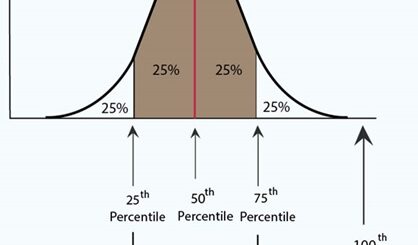ODDS Ratio Interpretation Quick Guide
odds ratio interpretation, the probability is a statistical term that relates to the likelihood of an event occurring. It’s calculated as follows:
Probability:
P(event) = (Desirable Outcomes) / (Possible Outcomes)
Let’s say we have a bag with four red cards and one green card in it. If you close your eyes and pick a card at random, the probability of picking a green card is computed as follows.
p(green) = 1 / 5 = 0.2
The odds of an event occurring can be calculated as follows.
Sample and Population Variance in R » finnstats
Odds:
Odds(event) = P(event happens) / 1-P(event happens)
For example, the odds of picking a green card are (0.2) / 1-(0.2) = 0.2 / 0.8 = 0.25.
The odds ratio is the ratio of two odds.
Odds Ratio:
Odds Ratio = Odds of Event A / Odds of Event B
We could, for example, compute the probability of getting a red or green card.
Random Forest Feature Selection » Boruta Algorithm » finnstats
The probability of picking a red card is 4/5 = 0.8.
The odds of picking a red card are (0.8) / 1-(0.8) = 0.8 / 0.2 = 4.
The odds ratio for picking a red card compared to a green card is calculated as:
Odds(red) / Odds(green) = 4 / 0.25 = 16.
Thus, the odds of picking a red card are 16 times larger than the odds of picking a green card.
How to Calculate Cross-Correlation in R » finnstats
When Do You Use Odds Ratios in Real Life?
In the real world, researchers employ odds ratios in a variety of situations when they want to analyze the chances of two occurrences happening.
Case 1: Interpreting Odds Ratios
We can consider one common example here, researchers seek to determine if a novel treatment enhances a patient’s chances of having a good health result when compared to an existing treatment.
The table below displays the number of patients who had a favorable or bad health outcome as a result of their medicine.
Calculating the odds ratio with a contingency table
| Positive Result | Negative Result | |
| New Medicine | 60 | 40 |
| Existing Medicine | 42 | 58 |
The odds of a favorable outcome for a patient under the new treatment or medicine can be computed as follows,
How to measure the association between the ranks? » finnstats
Odds = P(positive) / 1 – P(positive) = (60/100) / 1-(60/100) = (60/100) / (40/100) = 1.5
The odds of a patient having a favorable outcome under current treatment can be calculated as follows:
Odds = P(positive) / 1 – P(positive) = (42/100) / 1-(42/100) = (42/100) / (58/100) = 0.7241379
The following formula can be used to calculate the likelihood of a patient having a favorable result under existing treatment
Odds Ratio = 1.5 / 0.7241379 = 2.071429
This means that the odds of a patient having a favorable outcome with the new treatment are 2.071429 times higher than the chances of a patient having a positive outcome with the present treatment.
Subscribe to our newsletter!
Cluster Analysis in R » Unsupervised Approach » finnstats





